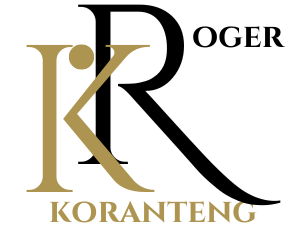Advanced Package Management: APT, Snap, and Flatpak

In the Linux ecosystem, managing software packages efficiently is crucial for maintaining a stable and secure system. Among the myriad of package management systems available, APT, Snap, and Flatpak stand out due to their advanced features and widespread use. Each system offers unique advantages and is suited for different use cases. This blog delves into these package managers, exploring their core features, benefits, and scenarios where they excel.
APT (Advanced Package Tool)

APT, or Advanced Package Tool, is one of the most traditional and widely used package management systems in Debian-based distributions, including Ubuntu. It manages the installation, updating, and removal of software packages.
Key Features:
1. Dependency Resolution: APT handles complex dependency management, ensuring that all required packages are installed for a given application to function correctly. This is particularly useful in maintaining system stability and avoiding conflicts.
2. Repository Management: APT relies on repositories, which are curated collections of software packages. Users can add, remove, and manage repositories through configuration files, allowing access to a wide range of software.
3. Package Sources: APT supports multiple package sources, including official repositories and Personal Package Archives (PPAs). PPAs are especially useful for obtaining newer versions of software or packages not available in the official repositories.
4. Command-Line Interface: APT provides a robust CLI with commands such as `apt-get`, `apt-cache`, and `aptitude` for package management. This CLI interface allows for precise control over package operations.
5. Automatic Updates: APT can automate the process of updating installed packages and the system itself, ensuring users always have the latest security patches and features.
Pros:
Extensive support and documentation.
Mature and well-tested.
Strong dependency resolution capabilities.
Cons:
Dependency resolution can sometimes lead to complex situations, especially with older or custom repositories.
Use Cases:
APT is ideal for users of Debian-based distributions who prefer a tried-and-tested system for managing packages. Its mature infrastructure and extensive repository support make it suitable for both desktop and server environments.
Snap
Snap is a modern package management system developed by Canonical, the creators of Ubuntu. It aims to provide a universal packaging format that works across different Linux distributions.

Key Features:
1. Containerization: Snap packages are containerized, meaning they include all necessary dependencies within the package itself. This isolation reduces conflicts and ensures that applications run consistently across various distributions.
2. Automatic Updates: Snaps receive automatic updates, which are rolled out in the background. This feature helps ensure that applications are always up-to-date with the latest features and security patches.
3. Cross-Distribution Compatibility: Snap packages work on any Linux distribution that supports Snap, making it easier for developers to package applications for multiple distributions without modification.
4. Sandboxing: Snap applications run in a sandboxed environment, which enhances security by isolating them from the rest of the system.
Pros:
Universality across different Linux distributions.
Self-contained packages reduce dependency issues.
Automatic updates and rollback capabilities.
Cons:
Larger package sizes due to bundled dependencies.
May have slower startup times due to the containerization.
Use Cases:
Snap is well-suited for users and developers who need to distribute applications across multiple Linux distributions. Its containerization and automatic updates are beneficial for ensuring consistency and security in a diverse ecosystem.
Flatpak
Flatpak is another modern package management system designed to provide a consistent environment for applications across different Linux distributions. It focuses on containerization and application isolation.

Key Features:
1. Sandboxing: Flatpak applications are sandboxed, providing a secure execution environment and limiting access to system resources. This approach helps protect the system from potential security vulnerabilities in applications.
2. Cross-Distribution Compatibility: Like Snap, Flatpak packages can be run on any supported distribution, allowing developers to target multiple systems with a single package.
3. Runtime Environments: Flatpak uses runtime environments that provide a consistent set of libraries and tools for applications. This approach helps minimize dependency issues and ensures that applications have access to the required resources.
4. Centralized Repositories: Flatpak applications are distributed through centralized repositories like Flathub, making it easier for users to find and install software.
Pros:
Strong focus on application security through sandboxing.
Consistent runtime environments reduce dependency problems.
Cross-distribution support and centralized repositories.
Cons:
Similar to Snap, Flatpak packages can be larger due to bundled dependencies.
Some applications may experience slower startup times.
Use Cases:
Flatpak is ideal for users who prioritize application security and need cross-distribution compatibility. Its focus on sandboxing and centralized repositories makes it suitable for both developers and end-users looking for a secure and consistent application environment.
Conclusion
APT, Snap, and Flatpak each offer distinct advantages in the realm of package management. APT is a robust and mature system well-suited for Debian-based distributions, Snap provides a universal packaging format with containerization benefits, and Flatpak offers a focus on application security and consistency. Understanding these systems' features and use cases can help you choose the right tool for your needs, whether you're a developer looking to distribute applications or a user managing your Linux environment.
What's Your Reaction?

























































